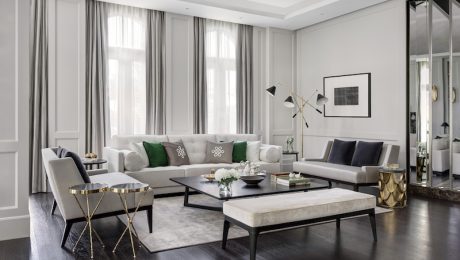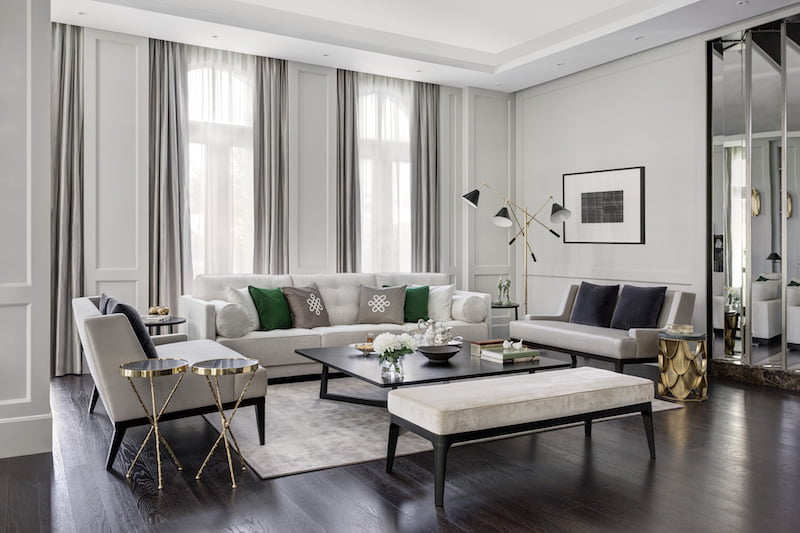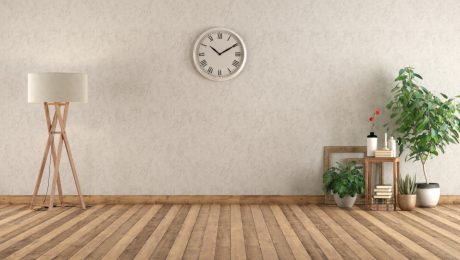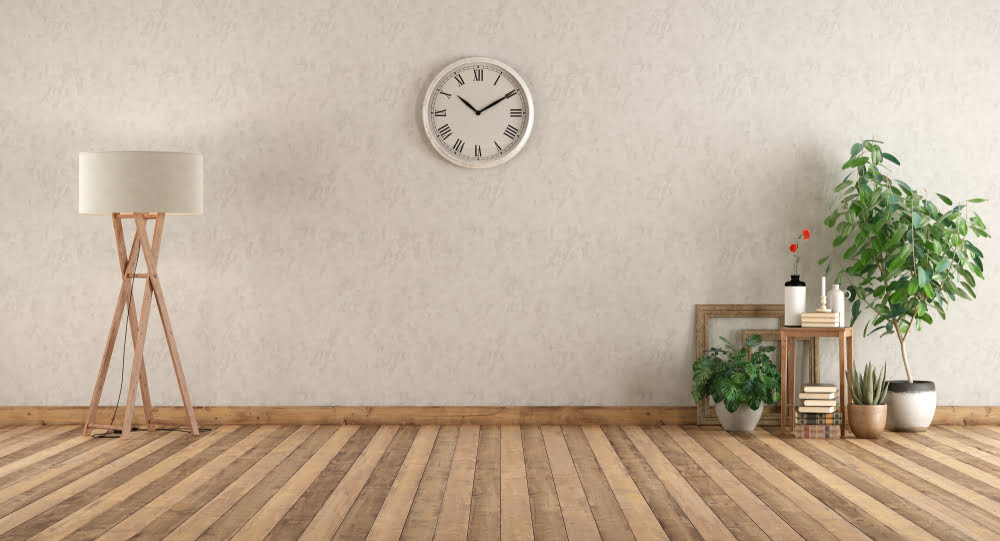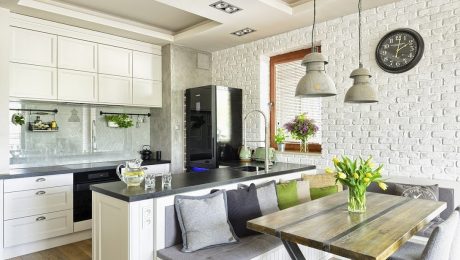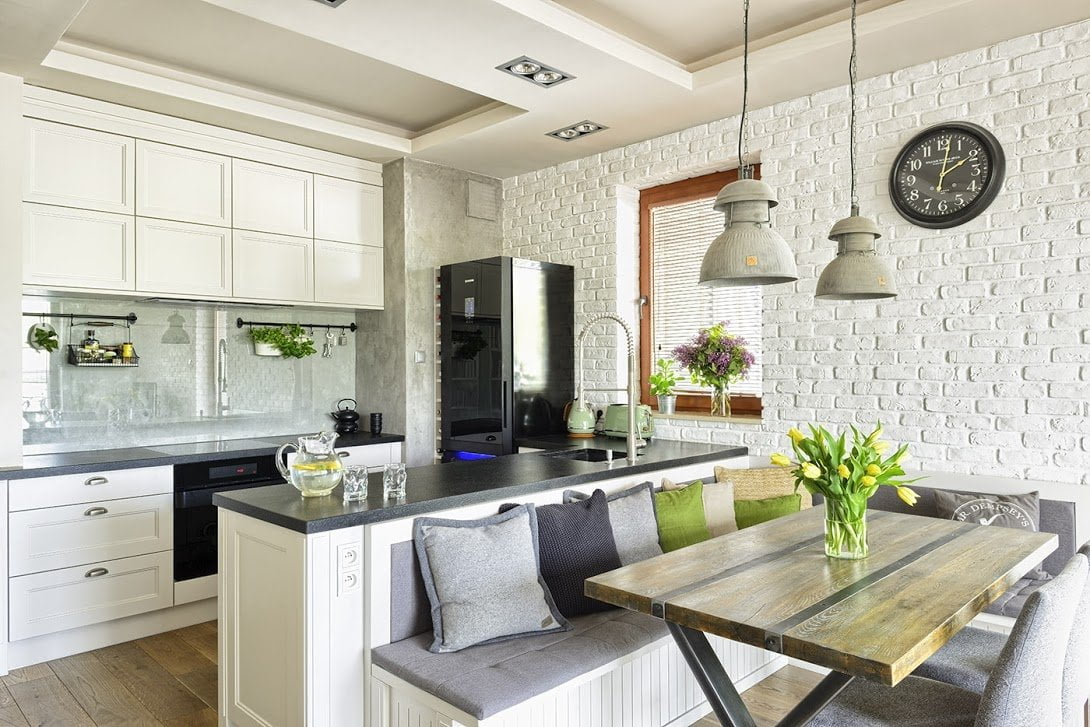Cryptocurrency Investing: A Guide to Making Smart Financial Decisions
What is Cryptocurrency:
In the dynamic world of finance, cryptocurrency investing has emerged as a revolutionary force, captivating the attention of investors and enthusiasts alike. As digital assets redefine the traditional financial landscape, navigating the realm of cryptocurrency investing requires knowledge, strategy, and a clear understanding of the opportunities and risks involved. Welcome to “Cryptocurrency Investing: A Guide to Making Smart Financial Decisions,” where we embark on a journey to demystify the intricacies of this exciting and transformative market. From understanding blockchain technology to evaluating investment strategies, join us as we explore the essentials of cryptocurrency investing and equip you to make informed and intelligent financial choices in this new era of digital wealth.
1. Embracing the World of Cryptocurrency Investing

Embracing the world of cryptocurrency investing opens doors to a dynamic and rapidly evolving market. As digital assets reshape traditional finance, understanding crypto prices, trends, and technologies becomes paramount. This journey delves into the complexities and potential of cryptocurrency investments, equipping you with insights to navigate the market with confidence and make informed financial decisions in this exciting landscape.
2. Unveiling the Cryptocurrency Landscape: Understanding Digital Assets

Unveiling The cryptocurrency landscape unveils a realm of digital assets that transcend traditional financial boundaries. From the basics of Bitcoin to the complexities of altcoins, understanding digital assets is essential. This chapter also delves into the intricacies of crypto mining, the process through which new coins are created and transactions are verified, revealing the backbone of many blockchain networks.
3. The Foundation: Exploring Blockchain Technology and Its Impact

The foundation of cryptocurrency investing lies in exploring blockchain technology and its transformative impact. This chapter delves into the workings of blockchain, the decentralized ledger underlying cryptocurrencies. Understanding how blockchain secures transactions and enables innovation is crucial in navigating the crypto market. By grasping this foundation, you’ll be better equipped to analyze trends, evaluate projects, and make informed decisions in the dynamic crypto market.
4. Navigating the Market: Analyzing Cryptocurrency Types and Categories

Navigating the cryptocurrency market involves analyzing the diverse types and categories of digital assets. From cryptocurrencies like Bitcoin to utility tokens and stablecoins, understanding their roles and functionalities is essential. This chapter also emphasizes the importance of staying informed with up-to-date cryptocurrency news, as it plays a pivotal role in shaping market sentiment and guiding investment decisions in this rapidly evolving financial landscape.
5. Risk and Reward: Grasping the Volatility and Potential of Cryptocurrencies

Risk and reward are inherent in the world of cryptocurrencies, where the potential for substantial gains comes hand in hand with volatility. This chapter delves into the dynamics of crypto crashing, exploring market downturns and their causes. By understanding the factors that contribute to price fluctuations, you can develop strategies to navigate through challenging times and seize opportunities in the ever-evolving cryptocurrency landscape.
6. Building a Solid Foundation: Essential Steps Before You Start Investing

Building a solid foundation before entering the world of cryptocurrency investing is crucial. This chapter outlines essential steps to take before you trade crypto. From setting clear investment goals to conducting thorough research, understanding risk management, and choosing reputable platforms, these preparatory actions empower you to approach crypto trading confidently, reducing risks and increasing your potential for success.
7. Investment Strategies: From HODLing to Day Trading

Exploring investment strategies is essential in the cryptocurrency landscape. This chapter delves into various approaches, from the long-term “HODLing” strategy to the active nature of day trading. Understanding risk tolerance, market analysis, and the role of crypto exchanges is vital for choosing the right strategy for your goals. By honing your approach, you can navigate the crypto exchange market with a clear direction.
8. Research and Due Diligence: Making Informed Investment Decisions

Research and due diligence are cornerstones of informed cryptocurrency investment decisions. This chapter emphasizes the importance of thorough investigation before diving into the market. From analyzing whitepapers to evaluating teams and technology, understanding the role of a cryptocurrency miner, and staying updated on industry trends, these practices empower you to make educated choices in the complex and ever-evolving world of digital assets.
9. Diversification: Spreading Risks Across Cryptocurrency Portfolios

Diversification is a key principle in managing risk within cryptocurrency portfolios. This chapter explores the strategy of spreading investments across various digital assets to mitigate potential losses. It also emphasizes the value of engaging with the cryptocurrency Reddit community, where discussions, insights, and perspectives from fellow enthusiasts can aid in making well-informed decisions and navigating the intricate world of digital currencies.
10. Security First: Safeguarding Your Investments from Cyber Threats

Prioritizing security is paramount in safeguarding your cryptocurrency investments from cyber threats. This chapter delves into strategies for protecting your holdings against hacks, phishing, and various cryptocurrency scams. From utilizing secure wallets to practicing two-factor authentication and staying vigilant about potential threats, understanding the intricacies of online security ensures your investments remain safe in the dynamic digital landscape.
11. Staying Legal and Tax-Compliant in Cryptocurrency Investments
Staying legal and tax-compliant in cryptocurrency investments is vital. This chapter covers legal considerations, regulations, and tax implications related to digital assets. Understanding how to report earnings and losses accurately is crucial. It also emphasizes the importance of maintaining a secure cryptocurrency wallet, not only for protecting your investments but also for securely managing your transactions within the evolving legal framework.
12. Market Trends and Analysis: Reading the Signs and Making Predictions
Market trends and analysis are pivotal in successful cryptocurrency investing. This chapter delves into technical and fundamental analysis, providing insights into reading market signs and making informed predictions. Understanding price charts, indicators, and sentiment analysis is essential. Additionally, utilizing a reliable crypto trading platform enables you to execute trades seamlessly and capitalize on opportunities in the fast-paced world of digital asset trading.
13. Long-Term Vision: Evaluating Cryptocurrency’s Role in the Future of Finance
Evaluating cryptocurrency’s role in the future of finance requires a long-term vision. This chapter delves into the potential impact of digital assets on traditional financial systems and economies. From decentralized finance (DeFi) to blockchain adoption, understanding the transformative possibilities empowers investors to position themselves strategically in an evolving landscape, where cryptocurrencies may shape the very foundations of global finance.
14. Case Studies: Learning from Cryptocurrency Investment Successes and Failures
Case studies offer invaluable insights into cryptocurrency investment successes and failures. This chapter examines real-world examples of individuals and projects, highlighting their strategies, challenges, and outcomes. Learning from these cases provides practical knowledge that can guide your decision-making process. By understanding both the triumphs and setbacks in the cryptocurrency world, you can refine your approach and navigate the market with enhanced wisdom.
Conclusion: Equipped for Smart Financial Decisions in Cryptocurrency Investing
In conclusion, this guide equips you with smart financial decisions in cryptocurrency investing. From understanding the technology and market dynamics to exploring diverse investment strategies and safeguarding your assets, you’ve gained a comprehensive understanding of the cryptocurrency landscape. By applying the knowledge and insights gained, you’re well-prepared to embark on a journey of informed decision-making and potential success in the exciting world of cryptocurrency investments.
Cryptocurrency Investing: A Guide to Making Smart Financial Decisions
- Published in Crypto, crypto currency, Economic Zone, ECONOMY, Featured, Featured Articles, Tokyo, top Featured, trend, Trends, uk, ukraine, US, USA, viral, Worldwide, Zillow
Unveiling the Top Interior Design Styles for a Modern Home
Welcome to the world of contemporary interior design styles, where creativity knows no bounds and innovation flourishes! In this ever-evolving era, a modern home serves as a canvas for self-expression, blending aesthetics with functionality to create spaces that embody the spirit of the times. Uniting form and function, the top interior design styles for a modern home are as diverse as they are captivating, reflecting the individual tastes and personalities of homeowners while embracing the essence of the present age.
From the timeless allure of Scandinavian minimalism, where clean lines and natural elements harmonize effortlessly, to the bold and vibrant eclecticism of Bohemian chic, where cultural diversity takes center stage, each design style offers a unique narrative. Step into a world where mid-century modern aesthetics coexist with industrial charm, and where contemporary elegance finds companionship with rustic warmth. This journey through the top interior design styles will inspire and empower you to curate spaces that embody the spirit of modern living, merging innovation with comfort and beauty with purpose. So, let us embark on this adventure of style, sophistication, and limitless possibilities!
Here are some of the top Interior design Ideas for a Modern Home:
- Scandinavian Minimalism: Embracing Simplicity and Serenity
- Bohemian Chic: A Fusion of Cultures and Colors
- Mid-Century Modern: Timeless Elegance with a Retro Twist
- Industrial Charm: Blending Raw Elements and Urban Sophistication
- Contemporary Elegance: Sleek Lines and Cutting-Edge Design
1. Scandinavian Minimalism: Embracing Simplicity and Serenity
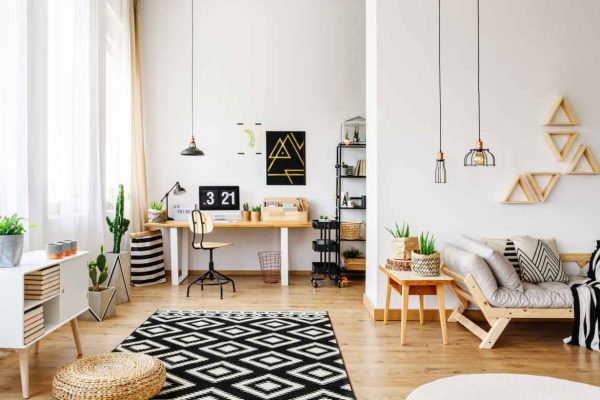
Scandinavian Minimalism, one of the most sought-after interior design styles for modern homes, revolves around the captivating essence of simplicity and serenity. Originating from Nordic countries, this design approach creates a harmonious and uncluttered living space, emphasizing clean lines, neutral color palettes, and the abundant use of natural light. Stripping away excess, Scandinavian Minimalism fosters a tranquil atmosphere that promotes relaxation and mindfulness. With a focus on functionality, every element serves a purpose while exuding understated elegance. From sleek furniture pieces to organic materials like wood and stone, this style seamlessly blends form with function, offering an inviting sanctuary that epitomizes contemporary sophistication.
2. Bohemian Chic: A Fusion of Cultures and Colors
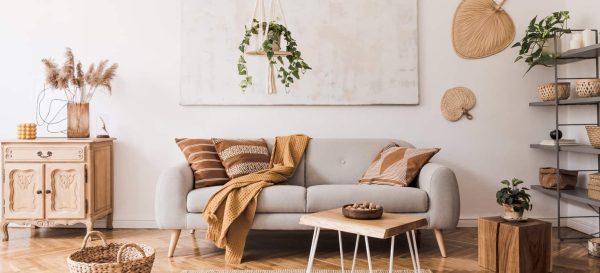
Bohemian Chic, a captivating interior design ideas for modern homes, weaves a tapestry of cultures and colors into a harmonious and eclectic space. Drawing inspiration from nomadic lifestyles and artistic expression, this style embraces freedom, individuality, and a laid-back vibe. Mixing vibrant hues, patterns, and textures, Bohemian Chic creates a rich and inviting ambiance that celebrates diversity. Vintage furniture, ethnic rugs, and an array of global accents add depth and character to the design. Plants and natural elements further enhance the boho atmosphere, promoting a connection with nature. In this alluring fusion of cultures and colors, a Bohemian Chic home becomes a captivating haven that exudes warmth and creativity.
3. Mid-Century Modern: Timeless Elegance with a Retro Twist
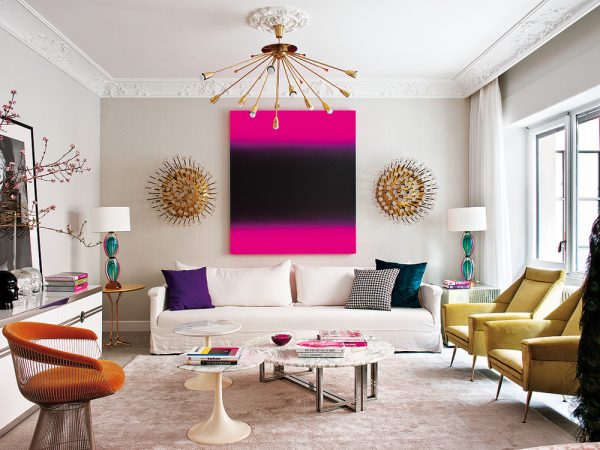
Mid-Century Modern, a timeless decorating styles, infuses homes with a touch of nostalgic elegance and a retro twist. Originating from the mid-20th century, this design approach remains immensely popular due to its enduring appeal. Characterized by clean lines, organic shapes, and a focus on functionality, Mid-Century Modern effortlessly blends form with style. Furniture pieces boasting sleek contours and innovative materials become statement pieces in this aesthetic, while bold colors and geometric patterns add a playful retro flair. Embracing simplicity and sophistication, this decorating style creates a balance between the past and the present, offering a classic yet contemporary atmosphere that complements modern homes beautifully.
4. Industrial Charm: Blending Raw Elements and Urban Sophistication
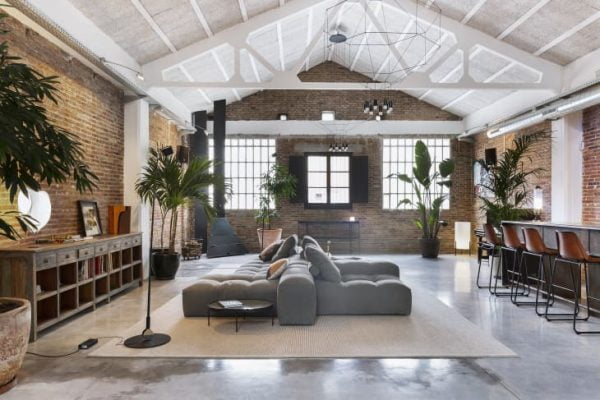
Industrial Charm, a captivating home decorating styles, embraces the raw beauty of urban sophistication. Drawing inspiration from old factories and warehouses, this design approach celebrates exposed brick walls, weathered wood, and metal accents. It seamlessly blends the utilitarian with the stylish, creating a unique and inviting ambiance. The use of salvaged materials and industrial lighting fixtures adds character and authenticity to the space. Neutral color palettes with pops of bold hues accentuate the industrial vibe while maintaining a contemporary edge. With a focus on open spaces and minimalism, Industrial Charm exudes a rugged yet refined charm that appeals to those seeking a distinctive and modern living environment.
5. Contemporary Elegance: Sleek Lines and Cutting-Edge Design
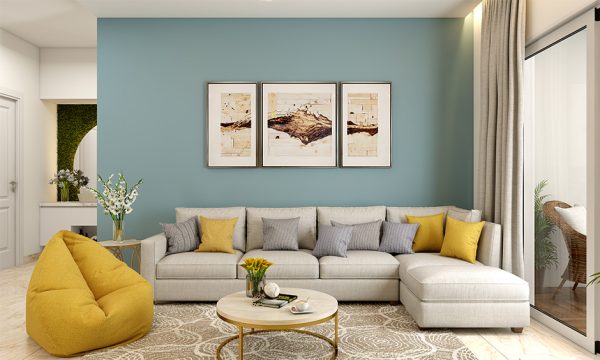
Contemporary Elegance, a captivating home decor styles, epitomizes modern sophistication with its sleek lines and cutting-edge design. This aesthetic embraces a clean and uncluttered approach, creating a sense of spaciousness and serenity. Neutral color palettes, such as whites, grays, and earth tones, dominate the decor, allowing key design elements to shine. The use of high-quality materials like glass, chrome, and polished metals adds a touch of luxury. Minimalist furniture and statement pieces with bold geometric shapes further enhance the contemporary allure. In this style, form follows function, seamlessly integrating technology and innovation into the living space, resulting in a harmonious and visually stunning environment that exudes modern elegance.
Conclusion:
In the vibrant world of interior design, exploring the top styles for a modern home reveals a captivating tapestry of creativity and innovation. From the serene simplicity of Scandinavian Minimalism to the eclectic fusion of Bohemian Chic, each style offers a unique expression of contemporary living. Embracing timeless elegance with a retro twist, the allure of Mid-Century Modern and the industrial charm of raw elements further enrich the choices available. Finally, contemporary elegance brings forth sleek lines and cutting-edge design. Embrace these diverse styles to curate spaces that reflect your individuality and make a statement in the modern world of home design.
FAQs:
Question 1: What are the 9 major interior design styles?
Answer: Below are 9 major interior design styles mentioned.
- Scandinavian Minimalism
- Bohemian Chic
- Mid-Century Modern
- Industrial Charm
- Contemporary Elegance
- Traditional
- Coastal
- Rustic
- Transitional
Question 2: What are the different types of interior designs?
Answer: Different types of interior designs include Scandinavian, Bohemian, Mid-Century Modern, Industrial, Contemporary, Traditional, Coastal, Rustic, Transitional, Minimalist, Art Deco, Victorian, and more, each offering unique aesthetics and design principles.
Question 3: What are the 5 style of interior design?
Answer: The five styles of interior design are Scandinavian Minimalism, Bohemian Chic, Mid-Century Modern, Industrial Charm, and Contemporary Elegance. Each style presents distinct aesthetics and concepts to suit various tastes and preferences in modern home decor.
Question 4: What are the 7 elements interior design?
Answer: The seven elements of interior design are space, line, form, light, color, texture, and pattern. These fundamental components work together to create harmonious and visually appealing environments that reflect the desired style and ambiance.
Question 5: What interior styles are trending?
Answer: As of my last update in September 2021, some trending interior styles included modern farmhouses, Japandi (Japanese-Scandinavian fusion), sustainable and eco-friendly design, and maximalist interiors with bold colors and patterns. However, trends can change rapidly, so it’s essential to check for the latest updates.
Unveiling the Top Interior Design Styles for a Modern Home
- Published in Featured Articles, interior, Interior Decoration Ideas, Interior Design, interiors, International, US, Worldwide
Elements of Style: Designing a Home & a Life
Everyone has their unique elements of style and preferences. This is why it’s important to create a cohesive and aesthetic design for your home and life. A cohesive design with aesthetics means that all of your interior and exterior design choices support and enhance one another. It helps you create a harmonious and beautiful space that you can be proud of.
When you have a cohesive design aesthetic, you’re not just looking at your home as a place to live. Therefore, it is also an expression of yourself. From choosing colors to selecting furniture, everything you need to know to create an aesthetic design for your home. So whether you’re looking to update your entire home or just want to update a specific area, read on to learn more ideas.
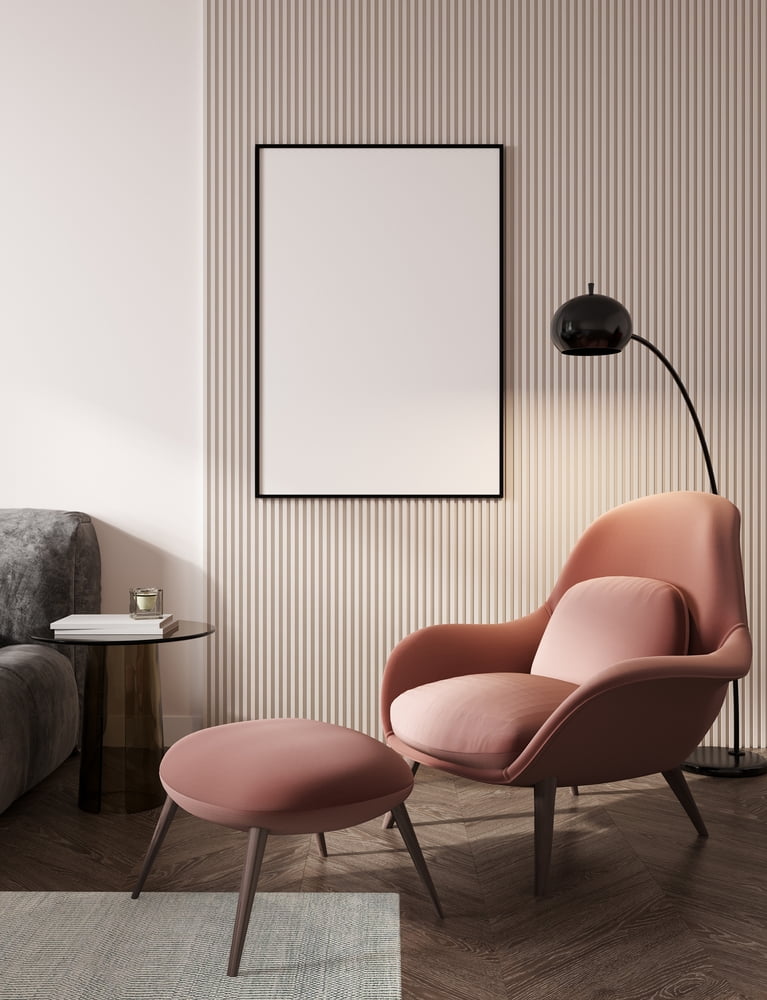
Defining a design aesthetic
Designing a cohesive design aesthetic for your home and life can be a daunting task. However, it is well worth the effort. A cohesive design aesthetic not only looks good. It also helps to simplify your life and make it easier to live in a space that’s pleasing to you.
When you have a cohesive design aesthetic, you’ll be able to focus on creating a space that’s functional, stylish, and calming. You’ll also be able to create a space that’s versatile and can be used for a variety of different purposes. One of the best ways to achieve a cohesive design aesthetic is to start by thinking about your needs as a person.
What kinds of things do you want in your home and life? What do you want to see more of? Once you have a good idea of what you want, it’s time to start thinking. You can learn more about the design elements that will help you achieve those goals. When homeowners have an attractive space, they will not stop getting compliments from guests.
Elements to consider for your home and life
Some of the most important design elements to consider for your home and life are color, texture, light, and material.
- Color
Color is one of the most important elements of design. You should think about the colors that will best represent you and your personality. For example, if you’re a minimalist, you might want to stick to colors that are light and airy. If you’re a more creative person, you might want to think about colors that are more vibrant and creative.
- Texture
Texture is also an important element of design. You should think about the textures that will best represent you and your personality. For example, if you’re a minimalist, you might want to stick to textures that are smooth and sleek. If you’re a more creative person, you might want to think about textures that are more bumpy and textured.
- Light
Light is also an important element of design. You should think about the light that will best represent you and your personality. You might want to use light fixtures that are sleek and modern. If you’re a more creative person, you might want to use light fixtures that are more rustic and traditional.
- Materials
Material is also an important element of design. You should think about the materials that will best represent you and your personality. Homeowners can use materials that are sleek and modern. If you’re a more creative person, you might want to use visually appealing materials.
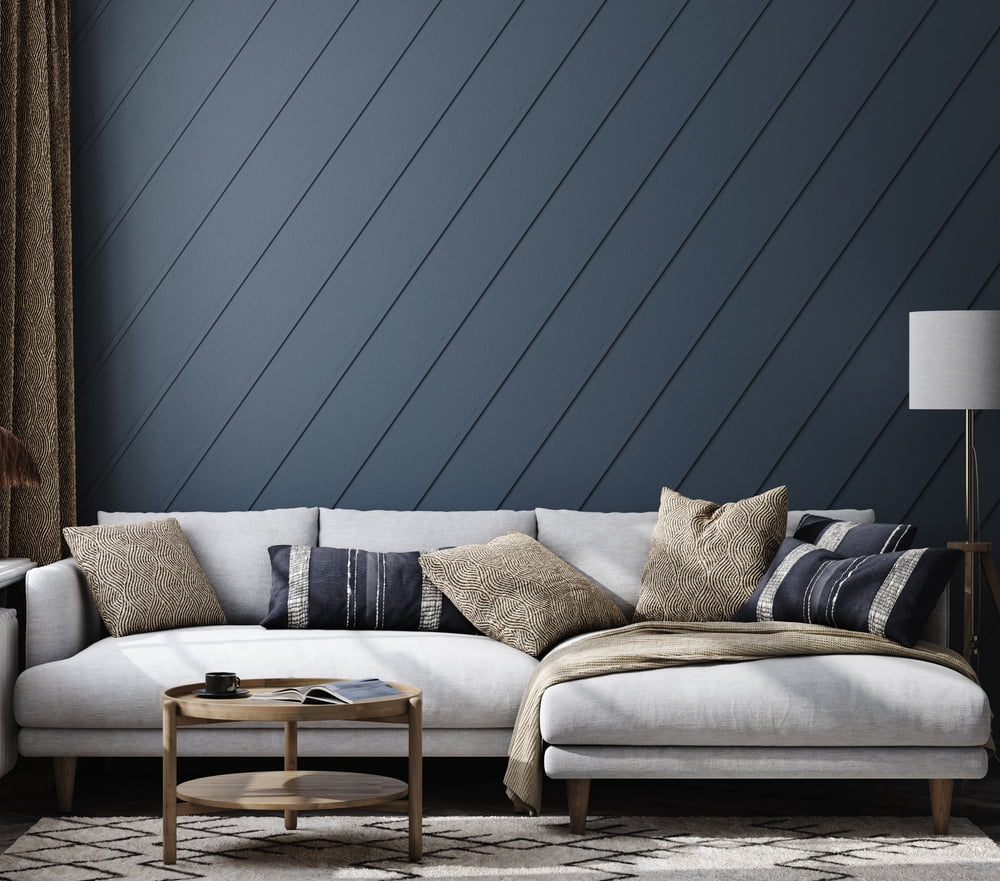
Creating a style guide
When it comes to designing your home, it’s important to have a style guide in place. This will help you create a cohesive look for your whole life, not just your home. You can use this document to help you with everything from choosing furniture to choosing colors.
Creating a style guide is a great way to keep your design ideas consistent and organized. It’ll also help you to stay on top of trends and make sure your home looks modern and stylish.
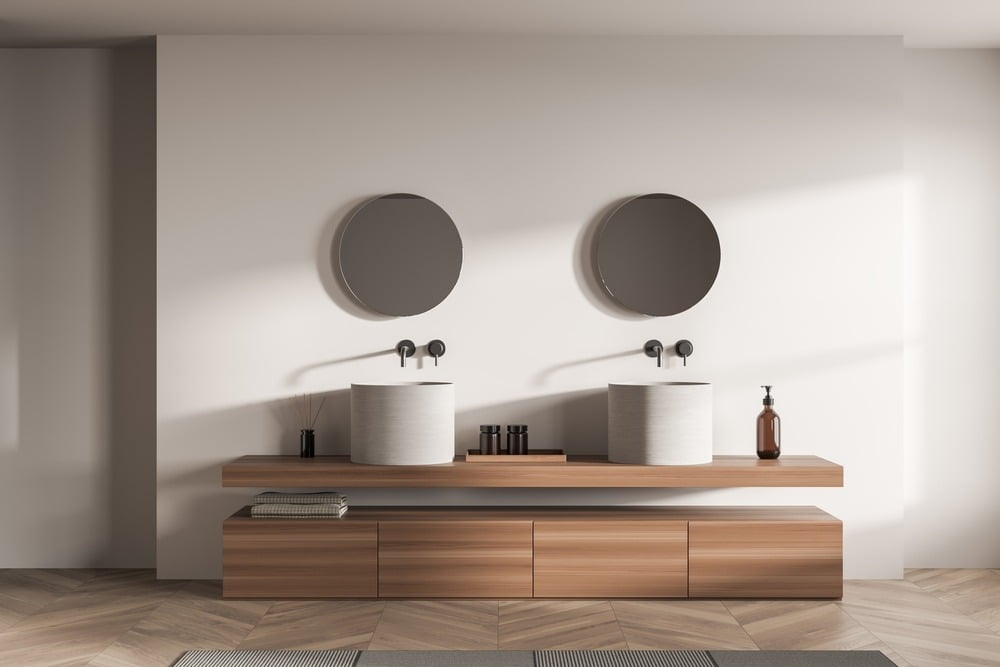
Applying a design aesthetic to your home
Creating a cohesive design aesthetic for your home is important not just for the look and feel of your place. It is beneficial for your day-to-day life too. An aesthetic design can help you declutter, organize, and streamline your home. It will help you focus on the things that matter most.
You can start to outfit your home with pieces that match and reflect your style. This will help you to declutter and make your home look more organized. A great way to start applying a design aesthetic to your home is by creating a mood board. This is simply a collection of images that help you visualize your goals for your home. Once you have a good idea of what you want, you can start shopping for pieces to achieve your goal.
Applying a design aesthetic to your life
Creating a cohesive design aesthetic can be done in several ways. You could go all out and purchase a specific style of furniture. Why not paint the walls a certain color, and have a certain type of rug on the floor? Or you could go with a more subtle approach and simply choose coordinating colors, furniture, and accessories. Whichever route you decide to take, be sure to keep the following concepts in mind:
- Balance: always try to strike a balance between formal and informal elements.
- Coordination: choo-complementary items and coordinate them together.
- Aesthetics: choose items that are stylish, eye-catching, and functional.
- Comfort: make sure all the items in your home are comfortable and easy to move around.
- Timing: choose items that will work with the style of your home and life.
- Patterns: use patterns sparingly, but when they are used, make sure they are well-designed.
- Storage: make sure you have enough storage space to accommodate your chosen design aesthetic.
- Functionality: make sure all the items in your home are useful and serve a purpose.
Conclusion
When it comes to home design, it’s important to be patient and take your time. No one wants to go through the process of redecorating only to have their dream home turn into a nightmare. It’s important to have a clear vision for your home and to stick to it, no matter what.
Elements of Style: Designing a Home & a Life
Kitchen with the living room – how to choose accessories?
One of the long-lasting trends in interior design is connecting the kitchen with the living room. Designers focus on opening the living space in such a way as to visually enlarge it and give households the impression of space even in small rooms. This solution has its advantages – it brings the household members closer together and makes them stay in the same room more often.
How to arrange a kitchen connected to the living room? It is worth ensuring that the style is consistent so that the dining, kitchen and sitting areas form a unity, rather than look like separate rooms. How to achieve it? By choosing the right colors, accessories and equipment.
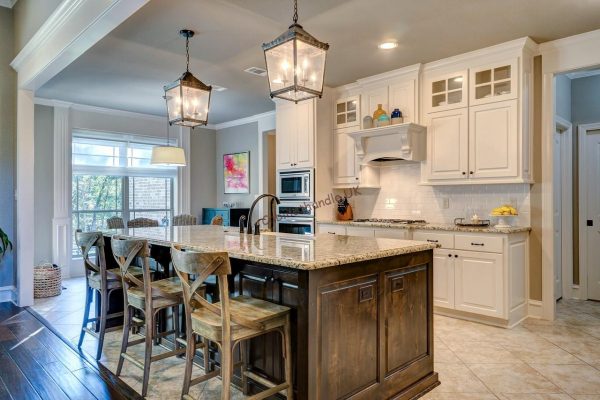
How to choose colors for an open kitchen?
When we decide to open the kitchen to the living room to gain additional space and optically enlarge it, the obvious choice may be white or very bright walls. They give the impression of even greater spaciousness, brightness and lightness. However, such colors can be hardly practical in places where we prepare and eat meals. So let’s use the growing popularity of gray then. Gray walls do not overwhelm the interior and are so versatile that they can be combined with dark and light furniture. They are suitable for both kitchen and leisure spaces and fit many styles. They also come in a rich palette of shades – both warm and cold, so everyone can choose the gray that suits them best.
What about dark and bright colors? You should act a little more carefully here. If the interior obtained from the combination of the living room and kitchen space is still small, then black, red, burgundy, brown or navy blue will overwhelm them and optically reduce. The same will happen when our open kitchen open to the living room is poorly lit. Then the dark colors will make it seem bleak, sad and tight. Dark and expressive shades can, however, be successfully used as a color accent combining spaces with different functionality. In the kitchen zone, such a wall will contrast nicely with bright tiles and furniture, while remaining functional. In the leisure sphere, it will add mood to the place where we sit in the evenings. If the remaining walls are still bright, it will not overwhelm the space, it will only diversify it. It will pay attention and add multidimensionality and character.
And what if we want to apply a dark color on all walls? Then you should opt for bright furniture and as many reflective accessories as possible – metallic, crystal and mirror. They will balance dark wallpapers or paint used on the walls.
Harmony of colors and textures does not have to mean boredom – color accents and patterns
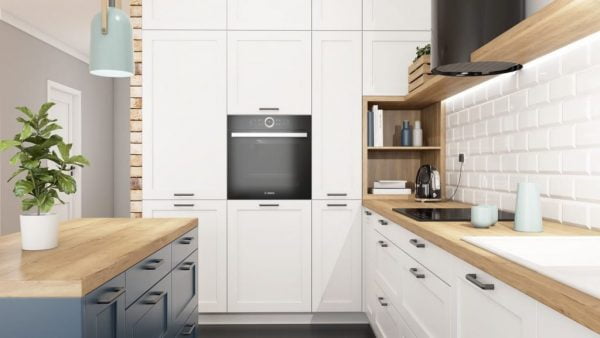
Combining the living room with the kitchen, you need to keep the same style and color in each of the room zones. However, such harmony does not necessarily mean boredom and monotony. The interior can be varied and at the same time mixed if you use:
• strong color accent on the walls and accessories
If you choose one accent color, you don’t have to use identical shades everywhere. Pillows and curtains may differ slightly. A slight difference in shades will give the interior depth and originality. However, it is important to keep the same tones – warm or cold. This will keep the consistency and impression of harmony.
You can also use two different accent colors, both similar to each other (e.g. green and yellow), and contrasting with each other (e.g. blue and red). However, remember that choosing three or more colors can give the impression of disorder and a smaller space (especially in a small room).
When choosing accessories in accent colors, pay attention not only to the seating and dining area but also to the kitchen itself. Here, it is more difficult to diversify the space with colors, because fewer textile accessories are used. However, you can always match the outstanding color of the tiles or good quality handles for kitchen cupboards. It is also worth buying household appliances, e.g. a toaster, electric kettle, and coffee maker in the same accent color that matches the curtains, pillows, and decorations in the seating and dining area. This will connect all the zones of the room with each other and make them form a harmonious whole. The effect will be the most aesthetic if the equipment will come from the same series.
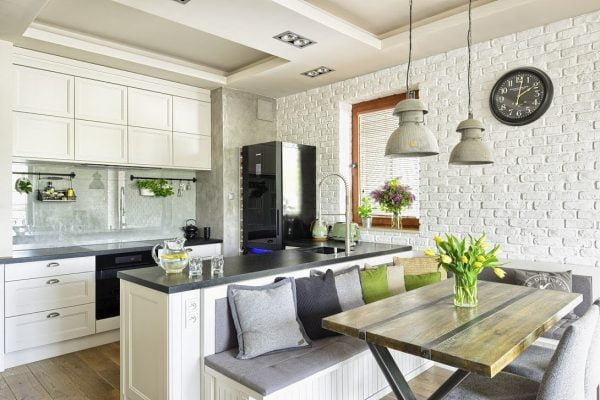
• patterns
If you want to mix space in the kitchen with the living room, you can also apply a variety of designs. Recently, not only Moroccan wallpapers and tiles are popular, but also graphic, floral and leaf motifs. Furniture handles with ceramics are very suitable for such patterns. Ceramics used in ceramic handles that we offer in our store are of the highest quality and some models have floral designs.
Why choose such accents? Patterns can effectively enlarge the space, e.g. horizontal stripes will optically lengthen the wall, and small patterns such as dots and zigzags will visually enlarge the space and deepen the impression of multidimensionality. In turn, floral elements add romance, coziness, and lightness to the room.
• metallic additions and distinctive textures
Connecting different zones in a kitchen open to the living room does not necessarily have to be done using color. You can keep the room monochrome and clean by placing only decorations and accessories that are metallic and with a mirror effect. Such details shine nicely and guarantee the effect of visual enlargement of space and brightening of the interior. More crystal and decorative accessories will work in glamour arrangements. These types of arrangements look great if you use crystal furniture knobs.
In turn, interiors with a raw and metallic appearance can be emphasized by modern bar handles. This type of furniture handles come in a glossy version: gold, copper and chrome, and matte: black and brass. Chrome and shiny elements can also be easily duplicated in the kitchen area itself (e.g. by finishing cabinets and household appliances).
You will also get similar consistency thanks to interesting textures. Not only will they diversify the monotonous colors, but they also give depth and multi-dimensionality to the entire room. Convex diamond-style patterns (consisting of small triangles that reflect light differently at different angles) are currently particularly popular. They look extravagant and modern. They fit both harsh and glamorous interiors. The diamond texture motif can be used, for example, on some kitchen cabinet fronts and duplicated on furniture in the living room or in accessories such as vases, photo frames, and lampshades.
When planning the interior and combining the functions of many rooms, remember to stick to a consistent style and one dominant theme. Try to avoid the impression of clutter and exaggeration. In the kitchen and living room, you spend the most time during the day, so these spaces should please the eye and be completely comfortable for you.



